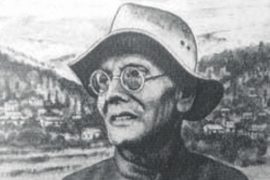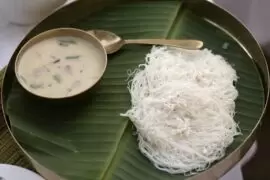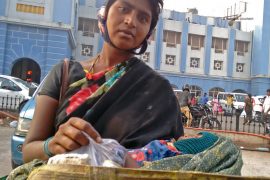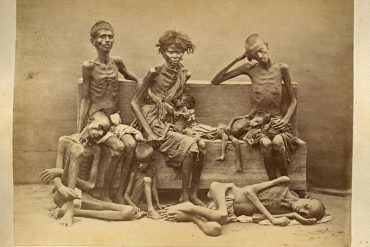When my Slovakian friend, Stanka, visited me in Chennai, I took her to all the places that make Chennai, well, Chennai. We went to Mylapore to pay obeisance to the Gods, walked along the Marina beach, ate Dosa at Saravana Bhavan, and even enjoyed the nightlife. One evening, as we were sipping masala tea, she asked me a question: ‘what does this head wobble indicate’?
Stanka stayed only for a month. But within that time, she found herself responding to everyone—especially my uncle, Raghavan—with a head wobble. Thanks to her, I became conscious that everyone in my family—me, my father, mother, brother, aunt, uncle—responds with a head wobble. For us, like most Indians, it’s perhaps the most natural gesture.
But what exactly does this head wobble mean?
The ‘Indian head wobble—variously known as the ‘Great India Nod,’ ‘the bobble,’ ‘the waggle,’ or simply, ‘the Indian head shake’—is a famous Indian gesture. It ‘is not a literal nod with the up and down motion from the head that indicates yes or even straight side to side that signals no. It’s an ‘even and continuous side-to-side rhythmic swaying of the head that is not firm or jerky.’ Priya Pathiyan, a Mumbai-based writer who leads guests on guided tours of her city, described it as ‘somewhat like an infinity sign, or a numeral eight lying down.’
The internet is populated with literature that tries to decode the ‘Indian Head Wobble.’ A video titled Indian Headshakes—What Do They Mean? by Paul Mathew received over a million views within a week. The video has had over four million views since its release in 2014. ‘If you are born in India, as you grow up, it becomes a part of your character, your personality; as you talk, you tend to move your head in different ways,’ says Mathew.
There are many videos that attempt to demystify the ‘Great Indian Head Shake.’ However, one could argue that it could be a pointless exercise. As a gesture, it is a cultural construct, a symbol that can only be understood, not explained. It can be a yes, it can be a no, it can be a whatever. It has many meanings and uses and none at all. ‘There is also an element of being friendly or being respectful, and it is difficult to say exactly which unless you know the situation,’ says Pathiyan. Indeed. It can be used in almost any context. A baby is born: Head wobble. Did you eat? Head wobble. Are you in love? Head wobble. Did you pass your exam? Head wobble.
The gesture is infectious. My friend from Slovakia picked it up by the time she left at the end of her sojourn. Some say the wobble is similar to ‘cool,’ ‘good,’ ‘ok,’ or ‘I understand.’ But, in reality, it is body language that can never be translated—not even by the ‘all-so-smart’ AI tools.
Margot Bigg, a British-American travel writer who writes guidebooks, spent over five years in India. She believes there are different head nods, and they all indicate different things: “A one-stroke side nod could mean ‘yes’ or ‘let’s go’, while a more consistent back-and-forth bobble is an acknowledgement of understanding.”
One also wobbles their head to say ‘thank you.’ Indians don’t generally say ‘thank you’ if they don’t mean it. Instead, they use the head wobble to express gratitude. A simple head nod can also be a sign of acknowledgement, which usually follows eye contact with someone you may know but are not in a situation to greet verbally. However, the head wobble can sometimes be a gesture to convey ambiguity intentionally. Society has taught everyone to be polite and treat one another respectfully, especially the elders and the guests. This can make saying no or expressing a disagreement a tough task.
According to cultural scientist Geert Hofstede’s extensive research on cultural norms across different countries, India scored 77 on the dimension of ‘Power Distance.’ Power distance can be defined as the extent to which people in an institution with less power expect and accept power inequalities. The global average of the same is 56.5. This high score means a limited ability to disagree with people who could be superior.
‘In a traditional agrarian economy such as the one in India, you don’t openly convey refusal or disagreement with any other person in the community,’ says Pradeep Chakravarthy, a Chennai-based corporate behaviour consultant and a writer. That’s because ‘you never know when you will need their help, and saying no means cutting off a relationship completely.’
Due to the formality of relationships and hierarchies maintained in society, a direct no comes off as rude. Such relationships are the ones with superiors at work, elderly members of the family, or political and religious leaders of the community. As Chakravarthy says, the vagueness of the wobble is a compromise, allowing people to interpret whatever they wish to while still leaving space to have a conversation about it. This means, at times, even Indians don’t know what a head wobble may mean in the conversation. It does create confusion amongst all of us. However, the gesture has been a part of the culture so much that almost every Indian uses it.
After Stanka’s stay in Chennai, university friends from different countries visited me. Almost all of them have noticed the ‘Great Indian Head Wobble,’ and after a week, they often found themselves using the gesture while conversing with other Indians. While it may be confusing at first, and one may never be able to crack the true meaning of each type of head shake, this infectious gesture will become a part of one’s response while dealing with it.
-30-
Copyright©Madras Courier, All Rights Reserved. You may share using our article tools. Please don't cut articles from madrascourier.com and redistribute by email, post to the web, mobile phone or social media.Please send in your feed back and comments to [email protected]











